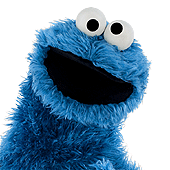Here's the thing: SST's done its job very well over these past 46 years, and back then its main objective was to reach out to the disadvantaged and inner city kids who didn't necessary grow up in the idealic world of suburbia where they were more likely to be surrounded by books and raised by educated parents - this is what Joan Ganz Cooney was producing documentaries about prior to SST. There was a need back in those days, and SST supplied that need: back in those days, it's main educational goals were pretty simple, such as letters, numbers, reading, shapes, patterns, and such. Not only that, but the show was aimed at the 4-6 age bracket.
Fast-forward decades later, the target audience has gotten steadily younger to prepare kids at an even earlier age, and not only that, but you've got tons of different educational shows competing for kids' attention, SST has to keep up with the times to face said competition (remember, they started it). With kids learning basic educational goals at such early ages, they have to step it up a notch and get a little more "advanced" in their content (lest we forget the season or two that was almost solely dedicated to STEM education); showing old-school SST to today's preschoolers, admittedly, would be like that episode of ARTHUR where Ratburn's sister subbed for the day and was teaching the students kindergarten-level lessons.
As for the confusion . . . hey, it could happen. I remember when I was in kindergarten, we had the original Letter People from the 70s, however, our teacher had the slightly updated record (this pre-dated the completely overhauled P.C. Letter People of today). Mr. H was depicted as being purple in most of our material, but the record cover had him yellow, and I was trying to wrap my mind around how could Mr. H be both purple and yellow. Showing old-school SST to today's kids, they're going to wonder where Elmo, Abby, Murray, Zoe, and others are; they're going to wonder who Mr. Hooper, David, and Olivia are; they're going to wonder why Snuffy is Big Bird's "imaginary" friend; they're going to wonder why does Hooper's Store have a taxi checkerboard tile front and why there's a Fix-It-Shop instead of a laundromat.
Fast-forward decades later, the target audience has gotten steadily younger to prepare kids at an even earlier age, and not only that, but you've got tons of different educational shows competing for kids' attention, SST has to keep up with the times to face said competition (remember, they started it). With kids learning basic educational goals at such early ages, they have to step it up a notch and get a little more "advanced" in their content (lest we forget the season or two that was almost solely dedicated to STEM education); showing old-school SST to today's preschoolers, admittedly, would be like that episode of ARTHUR where Ratburn's sister subbed for the day and was teaching the students kindergarten-level lessons.
As for the confusion . . . hey, it could happen. I remember when I was in kindergarten, we had the original Letter People from the 70s, however, our teacher had the slightly updated record (this pre-dated the completely overhauled P.C. Letter People of today). Mr. H was depicted as being purple in most of our material, but the record cover had him yellow, and I was trying to wrap my mind around how could Mr. H be both purple and yellow. Showing old-school SST to today's kids, they're going to wonder where Elmo, Abby, Murray, Zoe, and others are; they're going to wonder who Mr. Hooper, David, and Olivia are; they're going to wonder why Snuffy is Big Bird's "imaginary" friend; they're going to wonder why does Hooper's Store have a taxi checkerboard tile front and why there's a Fix-It-Shop instead of a laundromat.

 Welcome to the Muppet Central Forum!
Welcome to the Muppet Central Forum! Sesame Street debuts on Netflix
Sesame Street debuts on Netflix Back to the Rock Season 2
Back to the Rock Season 2 Sam and Friends Book
Sam and Friends Book Jim Henson Idea Man
Jim Henson Idea Man Bear arrives on Disney+
Bear arrives on Disney+